Felipe Pikullik: One of the New Generation of Independents Specializing in Superlative Hand Finishing and Hand Made Watches
A new generation of independent watchmakers is stepping into the limelight. Their watches are modest in appearance. No ambitious projects, no extraordinary complications, no widely conceptual designs. They use reliable Eta/Unitas or similar base movements and then modify them almost beyond recognition – and do so beautifully. In principle, the emergence of this generation is quite natural.
After the tsunami of crazy and complex watches we experienced from 2004 to 2015 there was too much complexity and sophistication, and at some point, I had enough of it. Not too much, just a little. I wanted something calmer, simpler, without the rush to be the first in the world with something exotic: I simply yearned for a large, beautifully made, very well-crafted, and superbly hand-finished caliber.
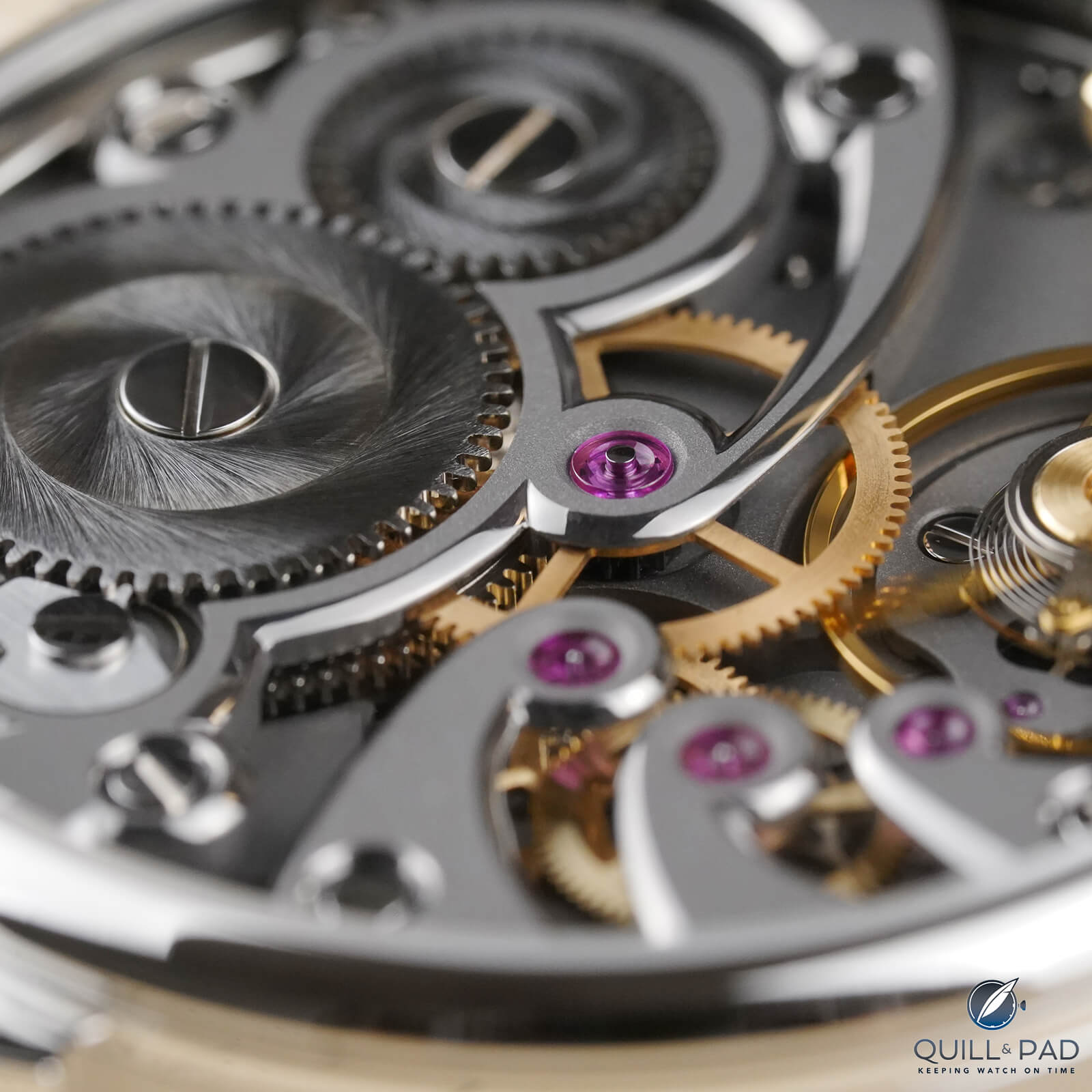
Superlative mirror polished anglange with sharp internal angles typical of Felipe Pikullik’s movements
These are the watches of Felipe Pikullik. I got to know his work on Instagram and you are unlikely to meet him anywhere else unless you go to Berlin, where he has set up his workshop (and only with a prearranged appointment). For me, who has become crazy about sharp mirror polished internal bevels, his Instagram page was like a ticket to a new world. Look at the calibers from Patek Philippe, F. P. Journe, not to mention Rolex:
How many properly sculpted sharp inner angles do we find in the calibers of these venerable brands?
Yes, they make excellent watches, but they lack my beloved hand finished internal angles on their bridges that are the hallmark of superlative hand finishing.
I once saw a magical machine in the Ulysse Nardin manufacture that perfectly beveled the edges of the bridge in one second with a diamond cutter– it was superficially nice, but don’t look at that kind of finishing under ten times magnification lest the magic vanish into thin air! I was confronted with a question that I classify as philosophical because I don’t have an answer: Is it worth asking respected watchmakers to do this painstaking work by hand, or is it OK for machines to do the beveling?
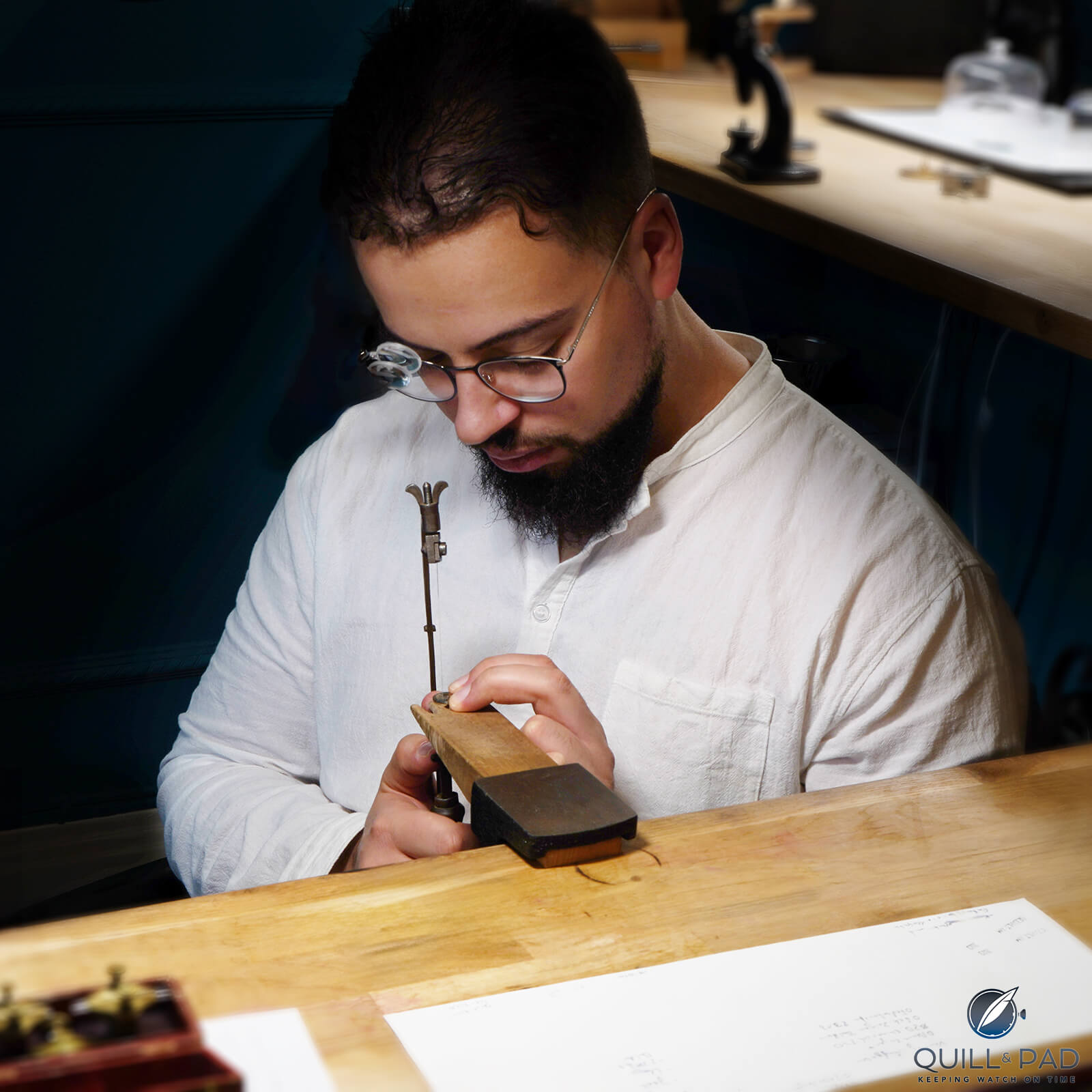
Felipe Pikullik hand skeletonizing a movement plate with a traditional jeweler’s saw
Felipe Pikullik has solved this dilemma in favor of the painstaking, tedious work that only few get to appreciate.
————————————————————————————————————–
—————————————————————————————————–
Pikullik is based in Berlin and has a Brazilian temperament and German attention to detail. We did a deep dive into metalworking and had a long conversation about what inspires and motivates him. And in the process, I confirmed some very banal assumptions. Yes, Felipe Pikullik uses Swiss ebauches as raw material to make his watches: currently the Eta/Unitas 6497/6498 and soon the Eta/Peseux 7001 for his new 38.5 mm slim watch project.
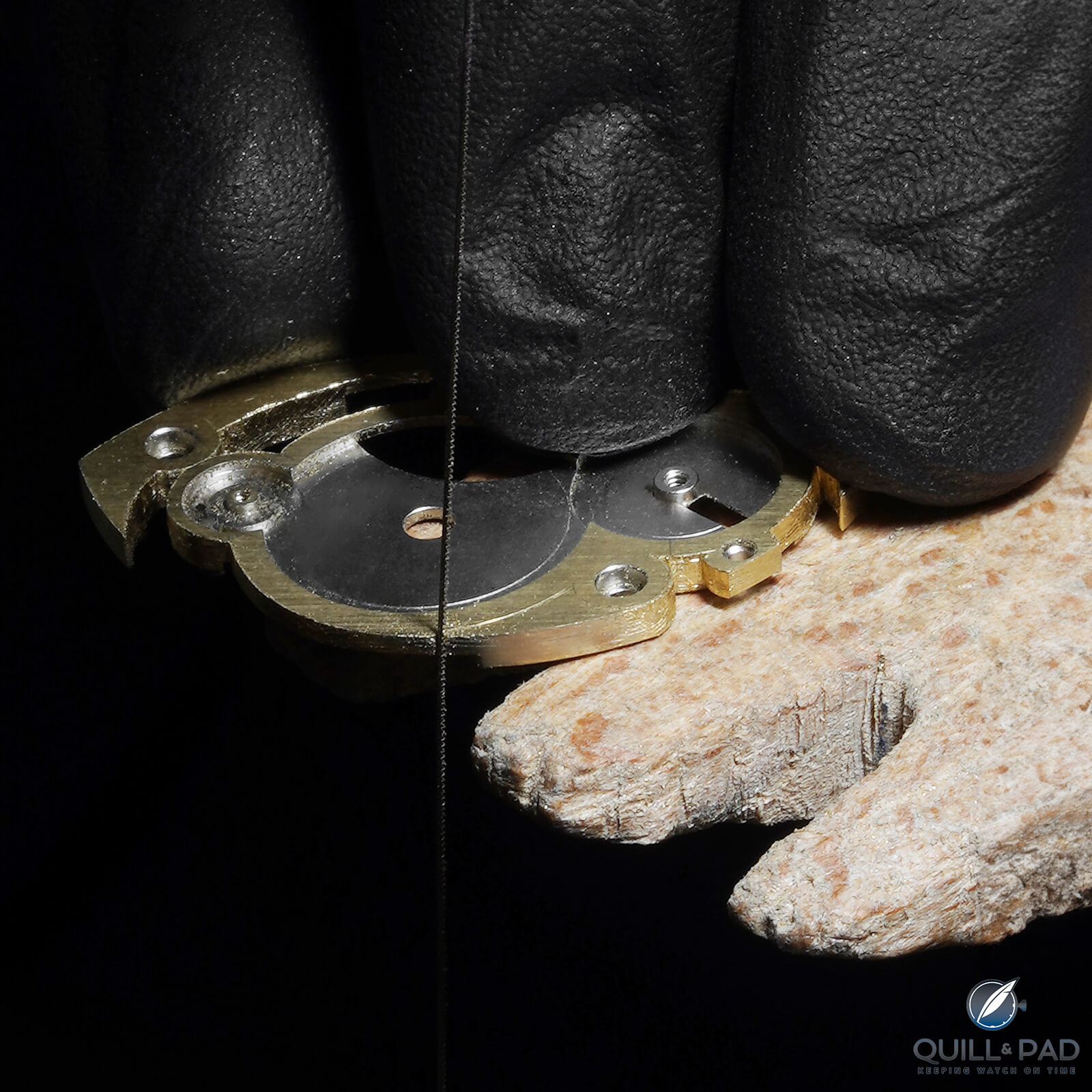
Hand skeletonizing a Felipe Pikullik movement plate
He rebuilds bridges and other parts, makes more and more screws (it’s easier to make new ones properly than to try to get the existing ones in the right shape), reworks the pinions and wheels, and then displays limitless creativity in hand finishing all the components with various techniques including grinding, polishing, engraving, skeletonizing, and inlaying.
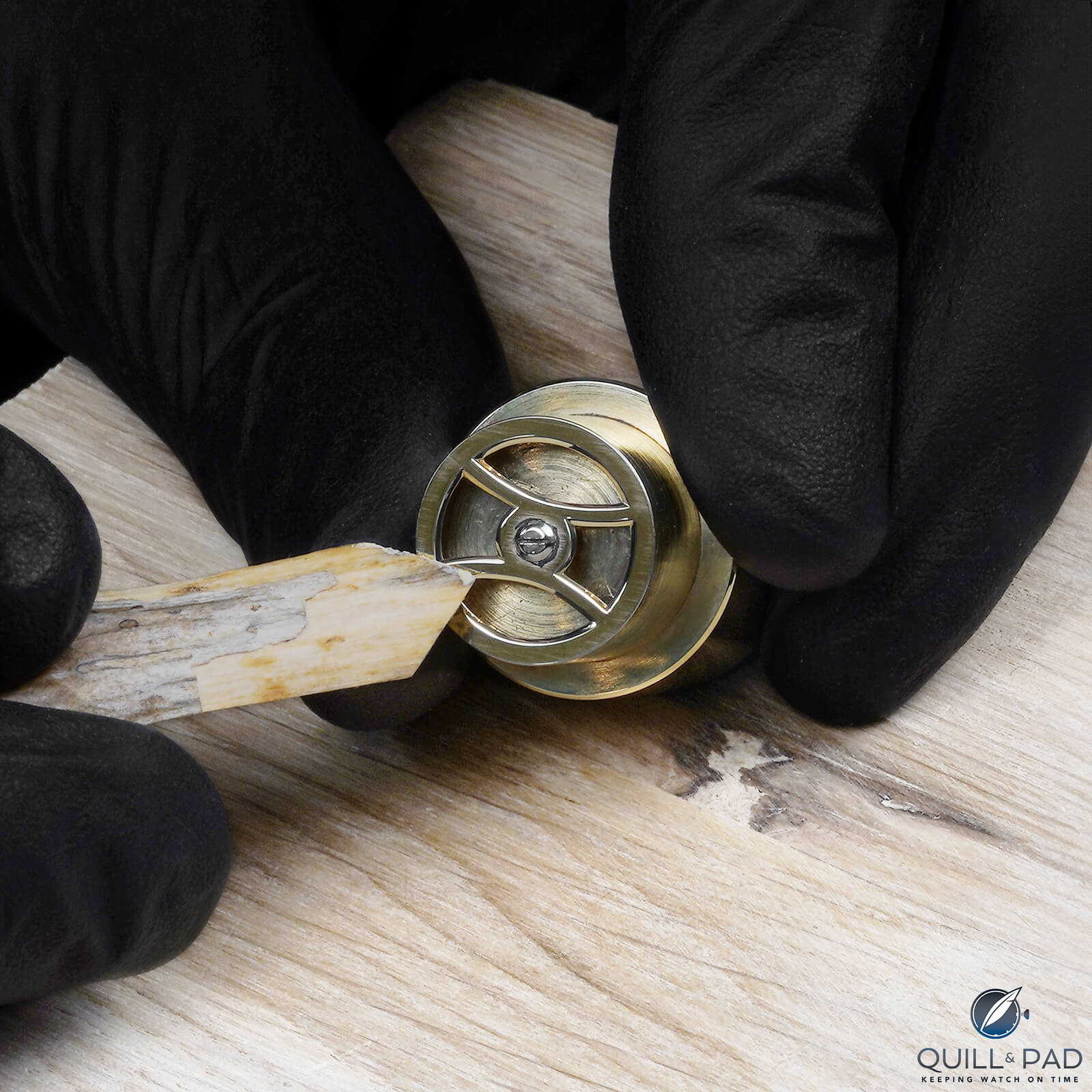
Felipe Pikullik hand polishing bevels
Not forgetting those sharp mirror polished internal (and external) bevels. He also makes his own cases case and the difficult task of making the hands and dials mainly by hand.
Pikullik began his career with an apprenticeship at the Glashütte watchmaking school, then worked at A. Lange & Söhne, before deciding to make watches under his own name. mainly by hand. He founded his workshop in 2017 and began producing highly decorative watches based on the Eta/Unitas calibers 6497 and 6498, a real workhorse for the budding independent watchmaker.
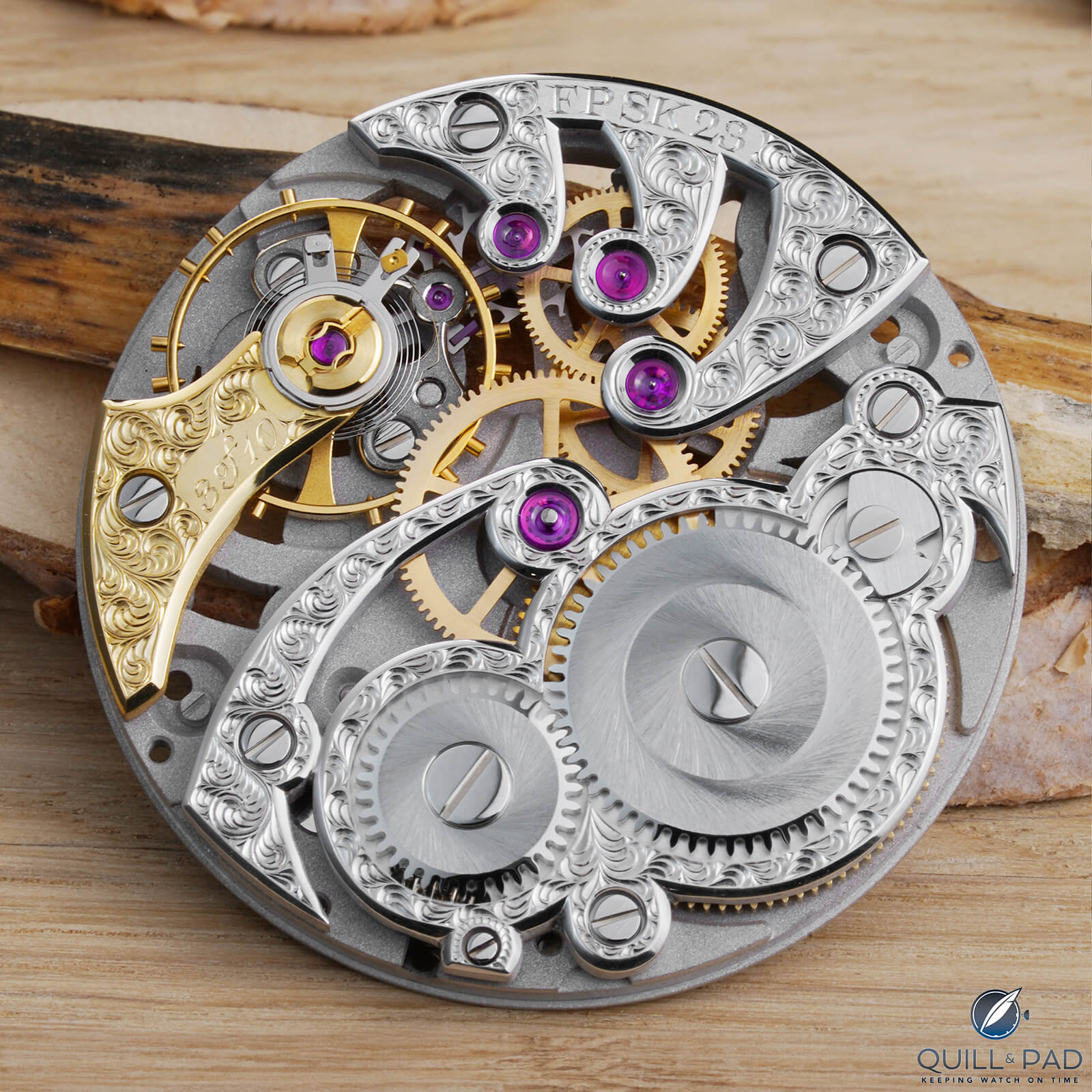
Felipe Pikullik caliber FPSQ23
Pikullik’s watches are characterized by their fine decorative finishing, which is noticeable in all of the components of the watch, but especially in the dials and movements. He transforms the regular 6497 and 6498 into true masterpieces with skeletonized bridges (ZBM1) or in the fully skeletonized version (FPSK Skeleton, introduced in 2022), with a fine finish, beautifully polished bevel and many sharp internal angles.
The engraving of dials and movements is also a strength, as the ZBM1 and HTH ‘Hommage to Harrison” series impressively demonstrate.
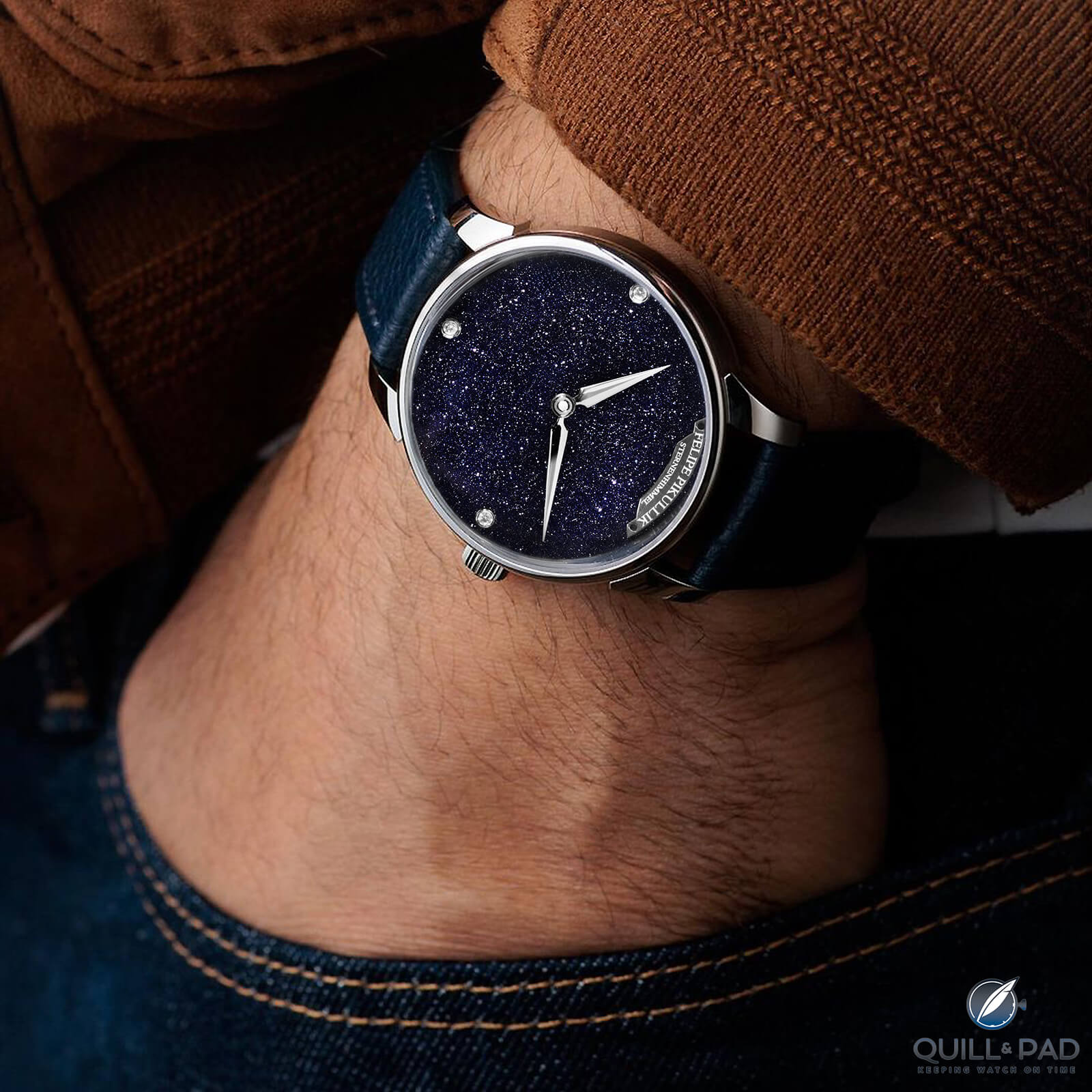
Felipe Pikullik Sternenhimmel with aventurine dial
In his Sternenhimmel watch, launched in 2021, Pikullik complements the partially skeletonized and engraved movement with a shimmering aventurine dial.
—————————————————————————————————–
—————————————————————————————————–
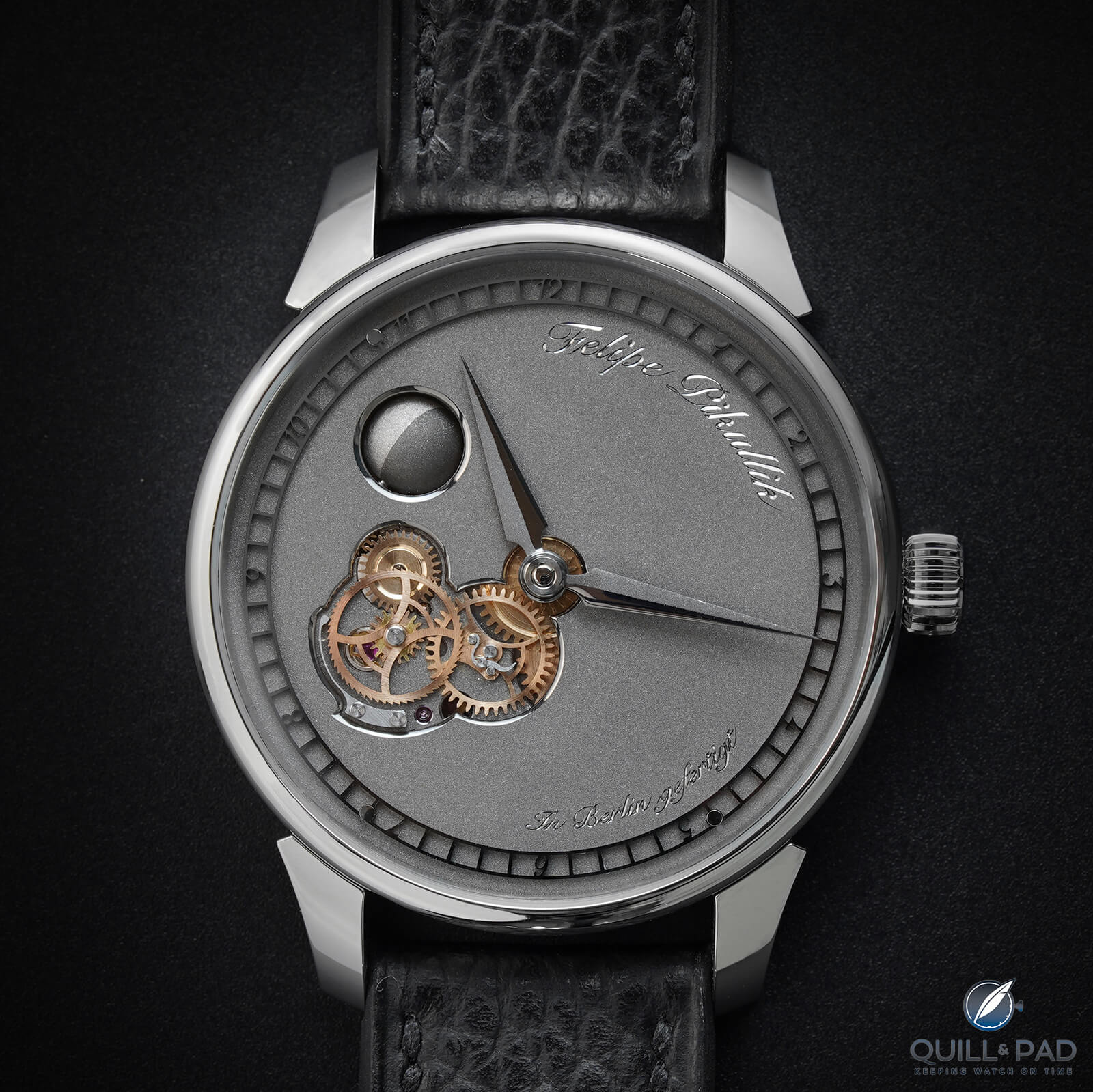
Felipe Pikullik Mondphase One
By 2023, Felipe Pikullik had gained enough experience to make a significant change to the caliber – he incorporated a spherical moonphase display and placed it between the bridges. This gives his Mondphase One a stunning appearance when viewed from behind.
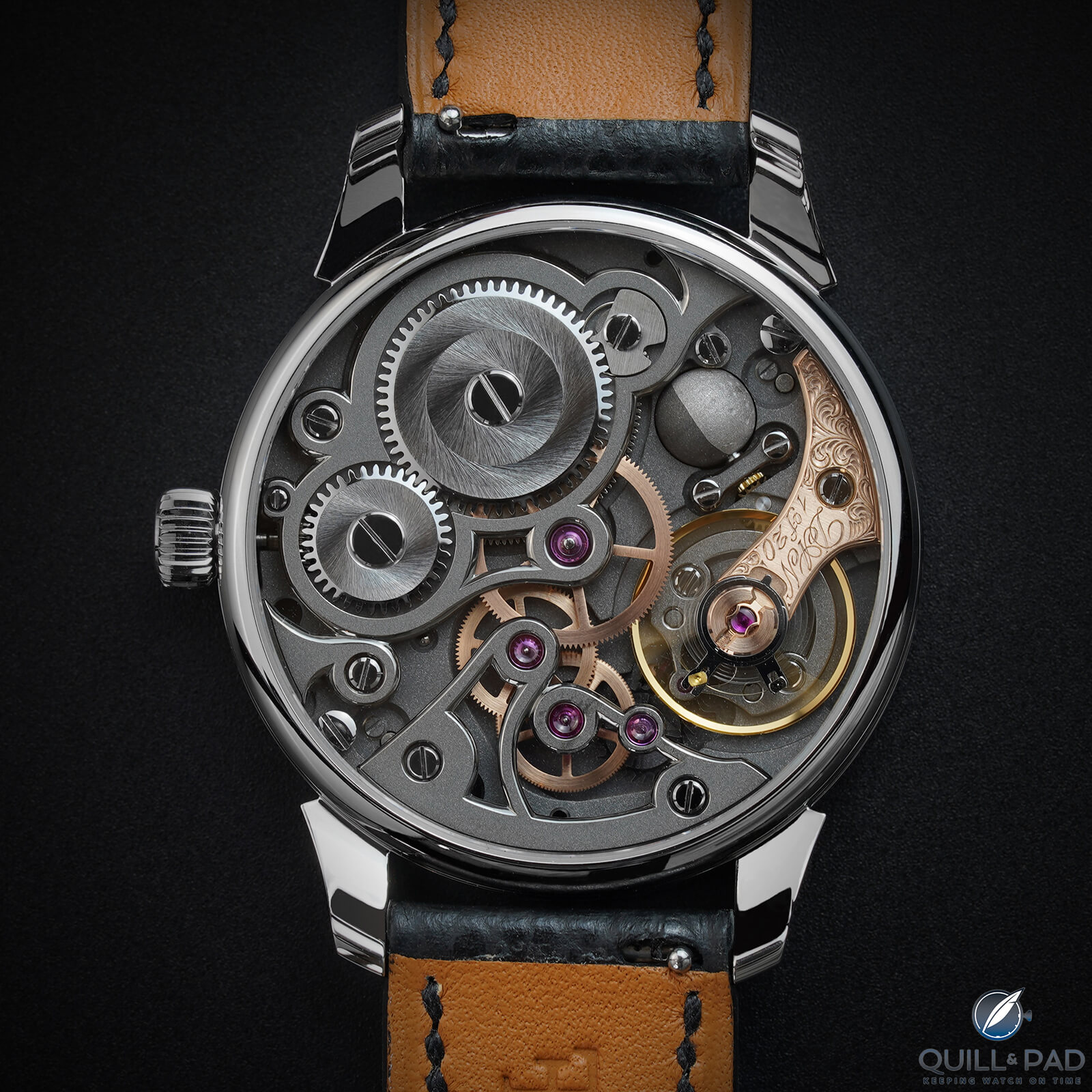
Felipe Pikullik Mondphase One movement side
He also incorporated an open drive gear of the moon sphere on the dial side so that you can enjoy the advance of the moon phase once a day – at midnight, although it can also be set to noon as the watch has no date.
The movement does not have a corrector for setting moonphase, so its owner sets the moon by advancing the hour hand at midnight, turning it back and repeating this process until the moon takes the correct position on the dial. He is currently developing a new project with a more compact and, what is very important for me, thinner movement – this is the 38.5 mm watch, which is only 7.5 mm high, which is a very good ratio for me and I’m looking forward to trying it on my wrist.
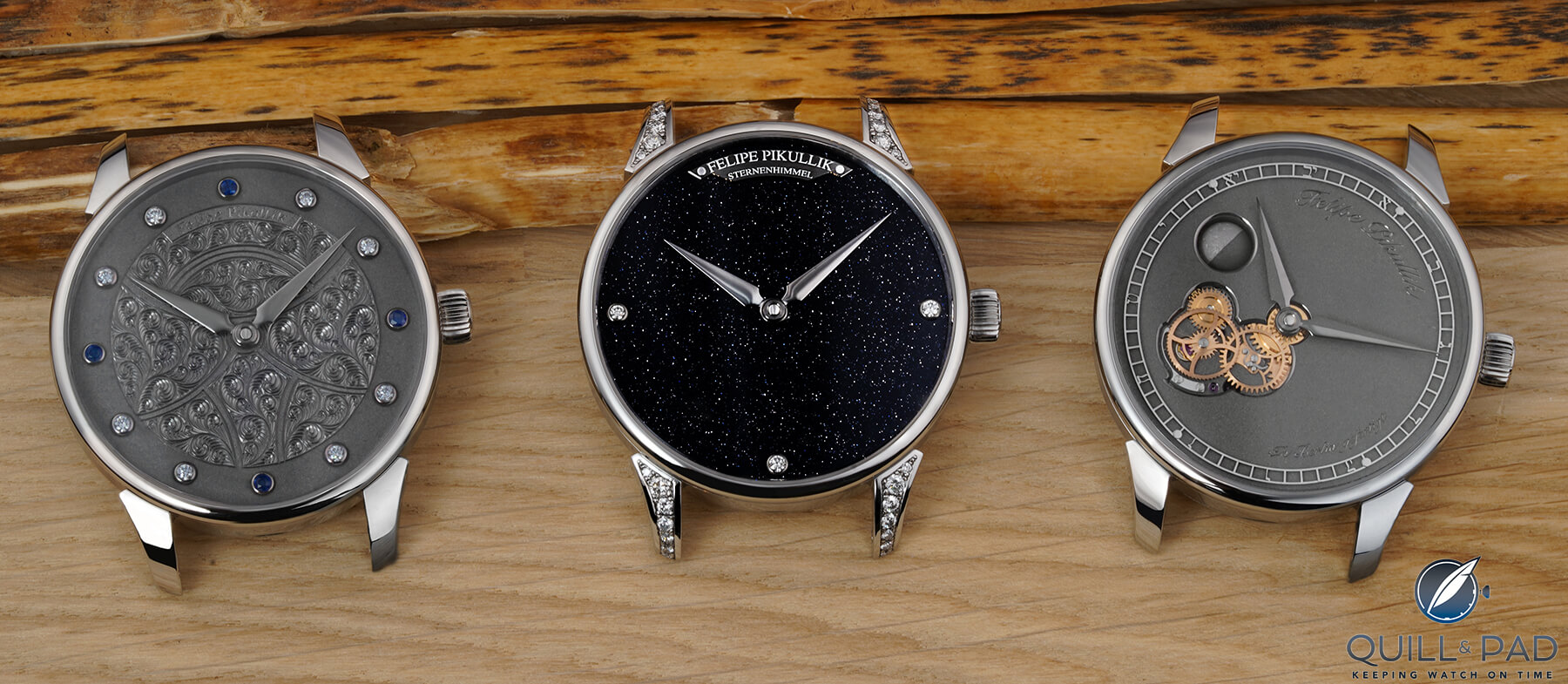
Felipe Pikullik collection in 2024
The watches in Pikullik’s current collection feature classic cases with gently tapering lugs and a flat, cylindrical caseband. The broad ‘alpha’ hands allows Pikullik the opportunity to display a level of handwork that we rarely see. He clearly restrains his temperament and makes the hands quite modest without becoming overly decorative. The same cannot be said of the movements and dials: they are decorated to a degree that is close to the maximum.
In this sense, a narrow bezel is very appropriate, providing maximum space to the dial, or movement in the skeletonized watches.
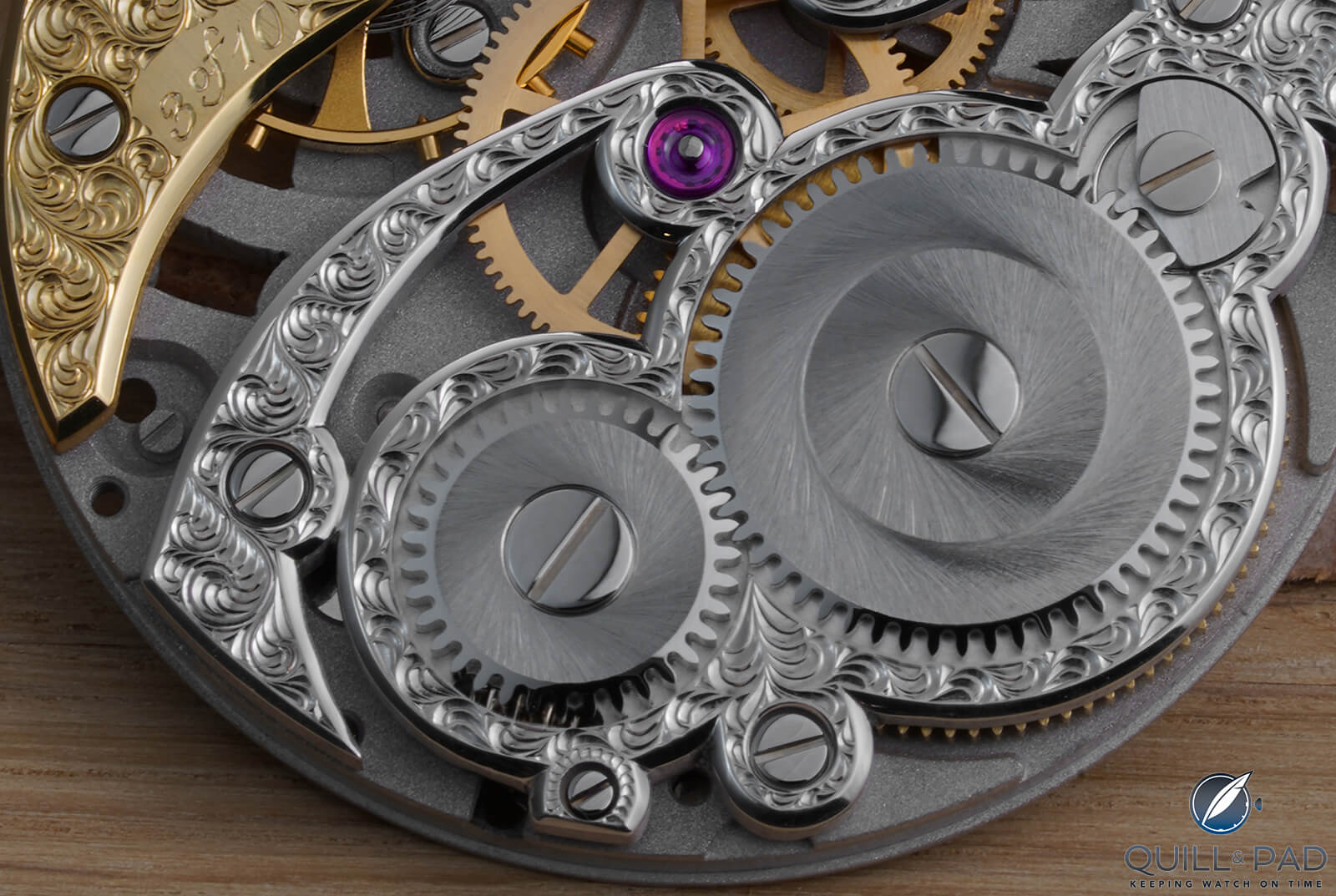
Felipe Pikullik caliber FPSQ23 details
Taking a closer look at the watch components, I can’t help but notice the screws. The screw heads on the early models left a lot to be desired – they were either in their original state, with a more industrial look, or they simply polished to create more shine. On later models, the screws are much better. In my opinion, they still deserve a more pronounced finish – the latest photo of the in-house screw on Instagram confirms that he gets the execution right, which seems to be an indication that he is planning to switch entirely to making his own screws.
—————————————————————————————————–
—————————————————————————————————–
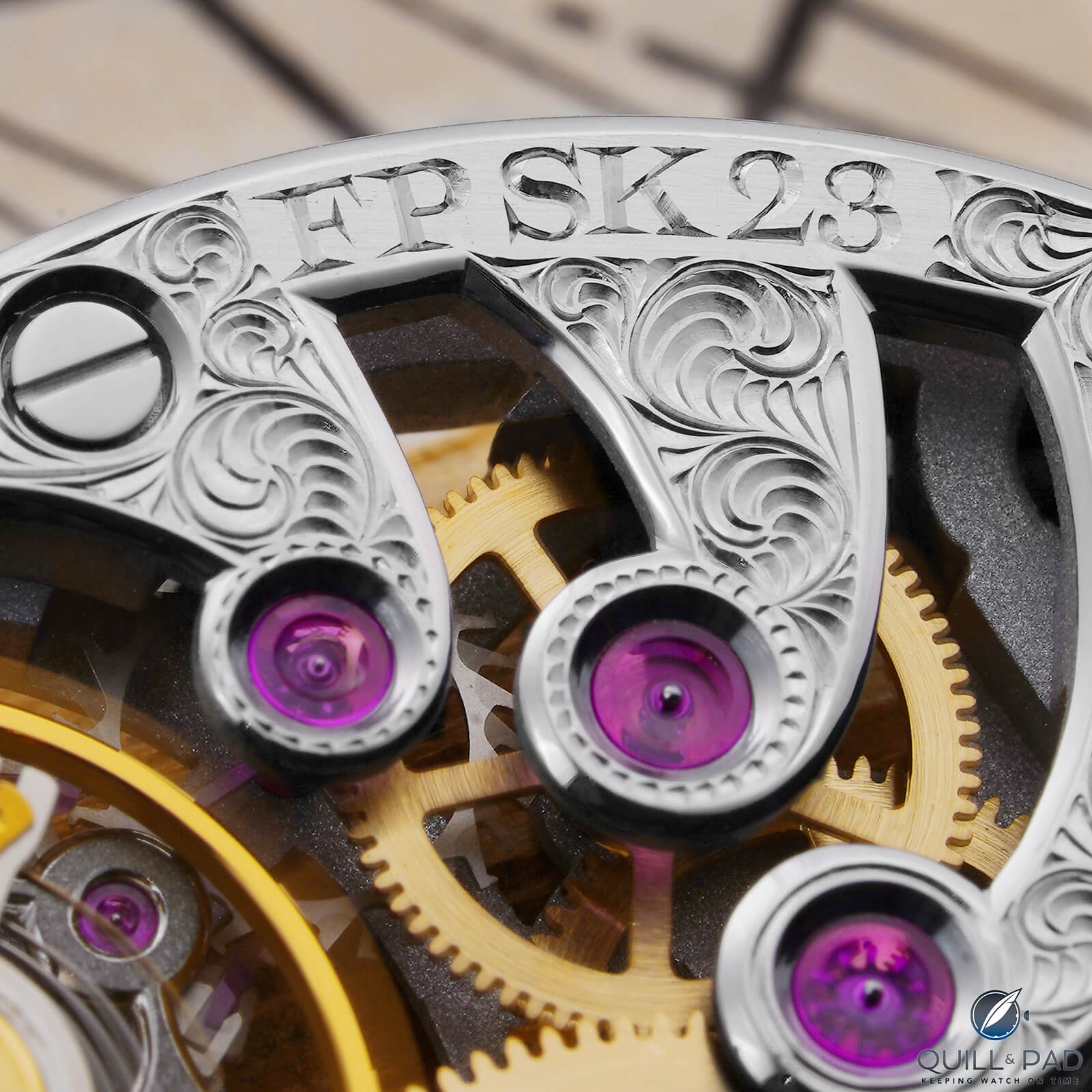
Felipe Pikullik caliber FPSQ23 engraving details
I also really liked the beautiful deep engraving of the lettering and the English-style floral design of the scrolls, and Pikullik makes it clear why this is a fitting choice for him. I get the impression that engraved watches make up a large part of his sales (I estimate around 80%). Nevertheless, I do have some criticism. I’m ambivalent about the combination of the engraved balance bridge and the plain Etachron regulator: why not the swan neck version? So I asked him (see below).
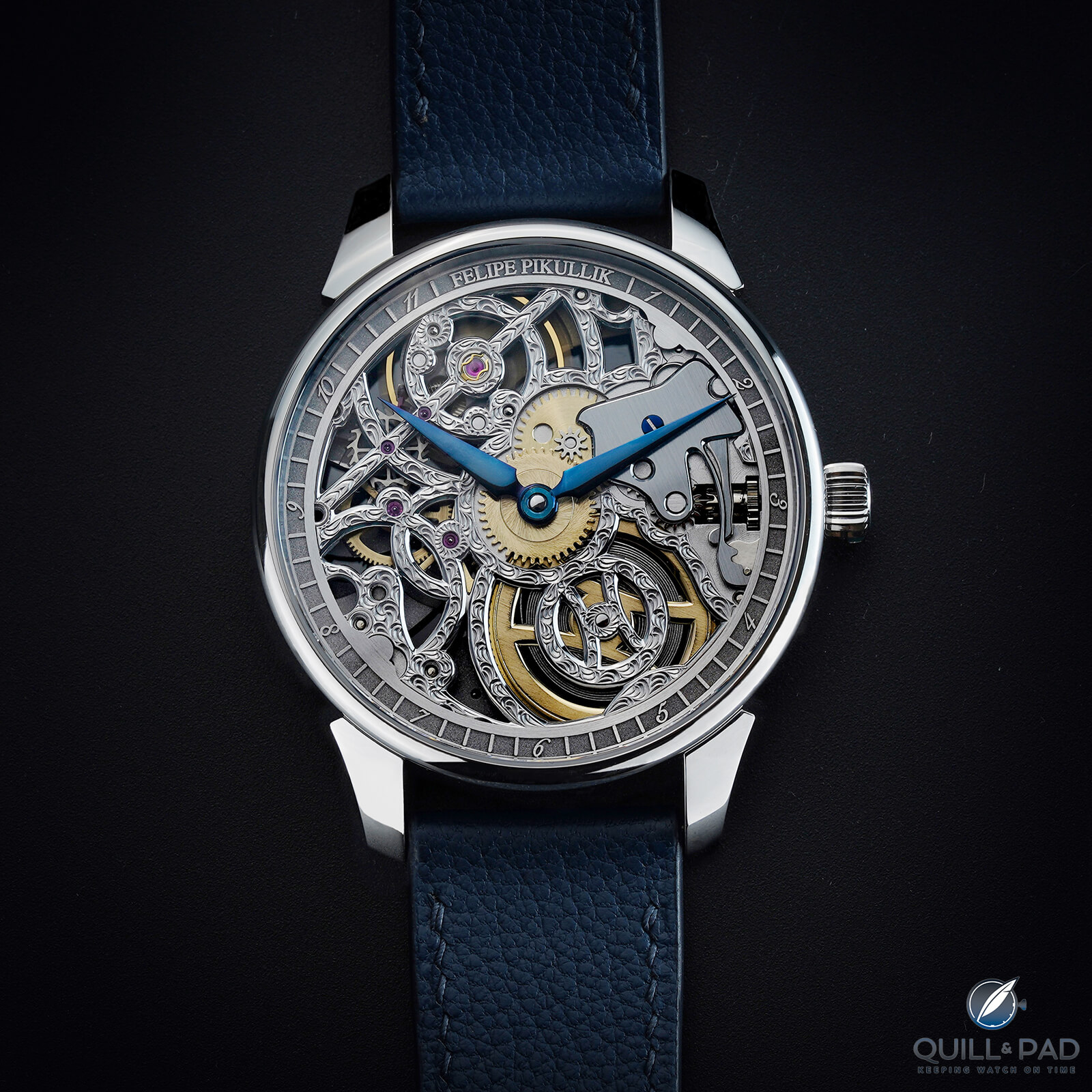
Ornately engraved Felipe Pikullik FPSK23
Before handing over to Felipe Pikullik, I would like to make one more point that seems important to me. Felipe used to work for A. Lange & Söhne, and it is interesting to find some signs of Saxon style in his watches, including that flat cylindrical caseband with brushing (not longitudinal, as with A. Lange & Söhne, but transverse), lugs with an accentuated shoulder merging into the caseband, and those the “alpha” hands.
However, this in no way implies that his watches resemble modern Langes. Pikullik is an independent German watchmaker who is influenced by the soil on which he grew up in. Good winemakers emphasize terroir and I won’t deny its influence.
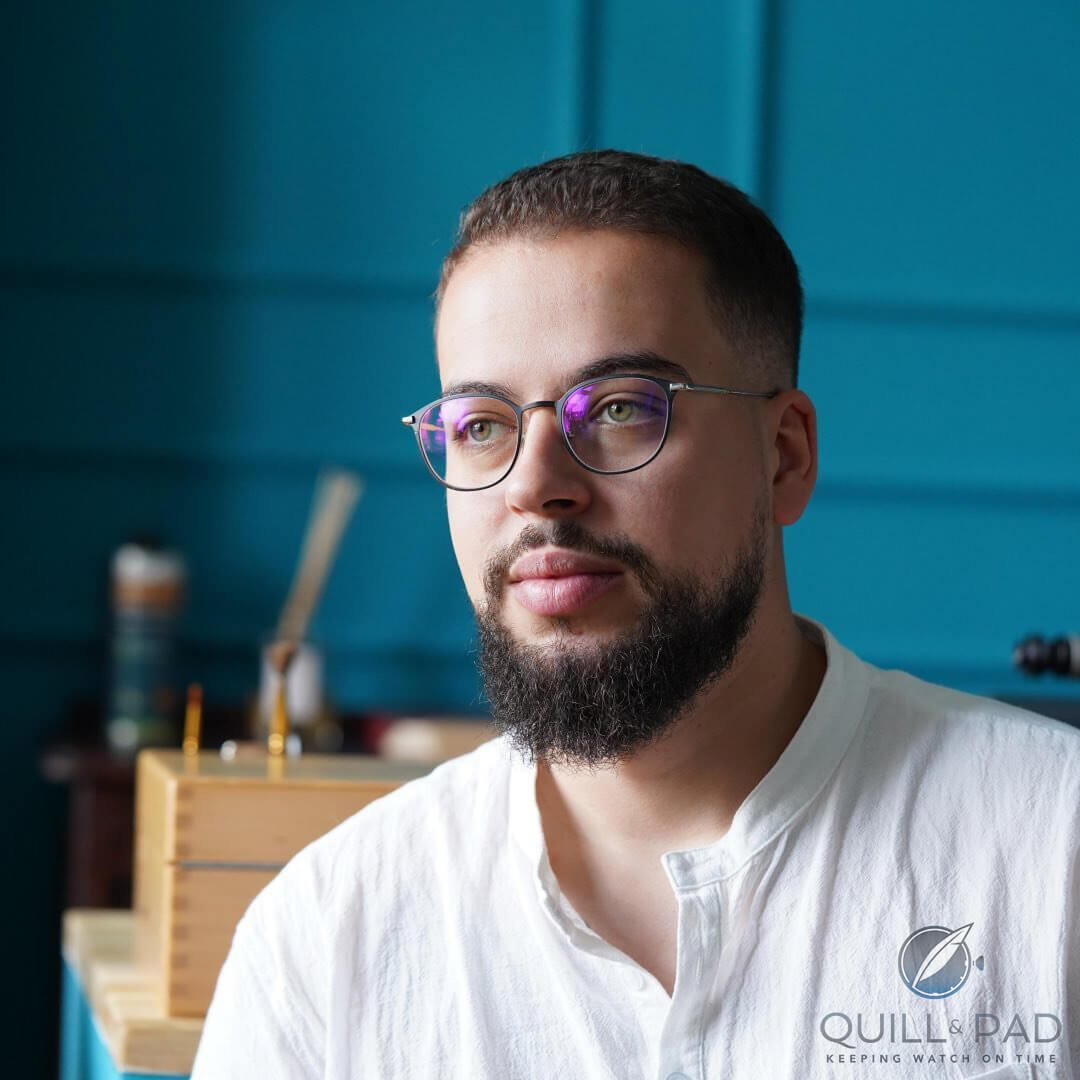
Felipe Pikullik
Felipe Pikullik Interview
AK: Who and what were your main influences and inspirations?
FP: I was and still am inspired by many brands and watchmakers from the past. Let’s take the ‘Alpha’ hands from A. Lange & Söhne that you referred to previously. You can find those hands on many watches, such as Parmigiani Fleurier, Jaeger-LeCoultre, etc. The use of this shape is simply the application of the classic style. In my designs, I try to draw on the past but adapt it to today’s use. So I have the classic hands and some other features, but also my own designs, combined with traditional skills in finishing the parts and skeletonizing.
The desire to study traditional skills inspired me to work at A. Lange & Söhne because I thought that everything there is handmade and master craftsmen make the watch from scratch. But when I came to A. Lange & Söhne I found out that in reality not everything is made by hand. Like most big brands they use CNC machines and similar computerized machines.
It’s okay because they don’t make a secret of it, but back then I was passionate about learning watchmaking and I couldn’t figure out what was handmade and what wasn’t, I could only ask the jewelers for their opinion. I talked to them about who was the best brand, who was the best watchmaker in the world. They all told me it was A. Lange & Söhne, and for a while I thought that Lange’s were the best watches in the world.
But now they are a legend, an icon, and they stand for what they do. I like Lange watches, but they are not completely handmade. So I decided to go my own way because I had learned to be a watchmaker and wanted to learn how to make a gear and why gears are the way they are, the maths and physics behind it all and how people could do it by hand 300 years earlier.
That was what was going through my mind: What is really handmade? What is the oldest technology? And what is the best technology? Besides, I didn’t just want to know what it was like in the past, I wanted to practice handmade watchmaking now.
So I searched for my way. After A. Lange & Söhne, I went to Kudoke and then to Rolf Lang. He’s also from A. Lange & Söhne. And he was my great master. Rolf Lang can really do everything by hand and I learned a lot from him. He gave me all the opportunities of I needed and wanted to know. And I try to put everything he taught me into practice and learn every day, even today, ten years later.
As a watchmaker, I try to teach my employees. There are 13 of us here, I start with them and then I want to offer the world, including customers, something unique. And yes, my watches are not 100% handmade yet, but that is the goal and we are going step by step.
—————————————————————————————————–
—————————————————————————————————–
AK: What kind of base movement are you using? Eta/Unitas?
FP: Yes, exactly. At the moment we are using Unitas 6497 and 6498 as base movements. Now we have the new project with the slim and smaller watch based on a Peseux 7001. The main plate remains the original, apart from the finishing and skeletonization, but we have completely redesigned the bridges, the screws and the ratchet system. We also make the screws here on the watchmaker’s lathe. And that’s just a small step for me to have the watch as handmade as possible.
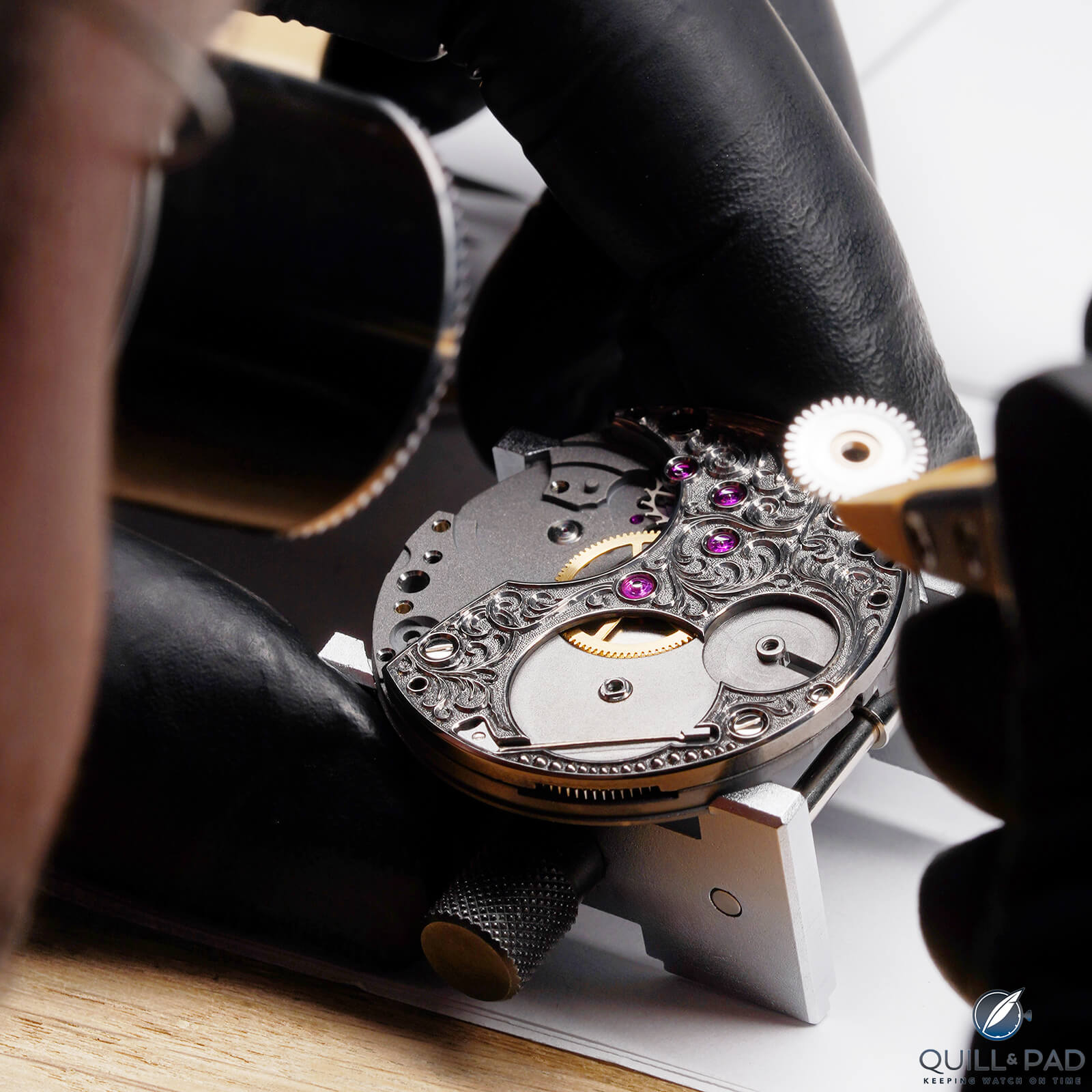
Assembling a Felipe Pikullik movement
A bigger step is my Mondphase One watch. All the gears of the moonphase mechanism and the bridge for the moon sphere are completely handmade. Our next step, the next stage, is definitely the balance wheel and hairspring. We will make our own balance wheel, which will be handmade and will incorporate a Breguet-overcoil hairspring.
AK: I would like to mention what I think is the biggest contradiction in your watches. There are beautiful details finished to the highest standard, including the numerous sharp inner corners on the bevels. I know that this work is particularly time-consuming and very delicate, but at the same time, I find an ordinary Etachron balance wheel. What do your customers say? Why don’t you use a more elaborated regulator system?
FP: Normally we are not asked. But if you ask, I’ll tell you that it’s because we put so much effort into the manual work on every other part. This also applies to the gears – we polish the pinions and gears to bring the execution to a true ‘manufacturer’s caliber’ of quality. Our approach becomes clear when you think, for example, of a company that develops and manufactures a new movement. How do they normally make it? With CNC machines, right? Then they take the parts and finish them. It’s similar with our watches: We take the Unitas parts and put a lot of effort into finishing them.
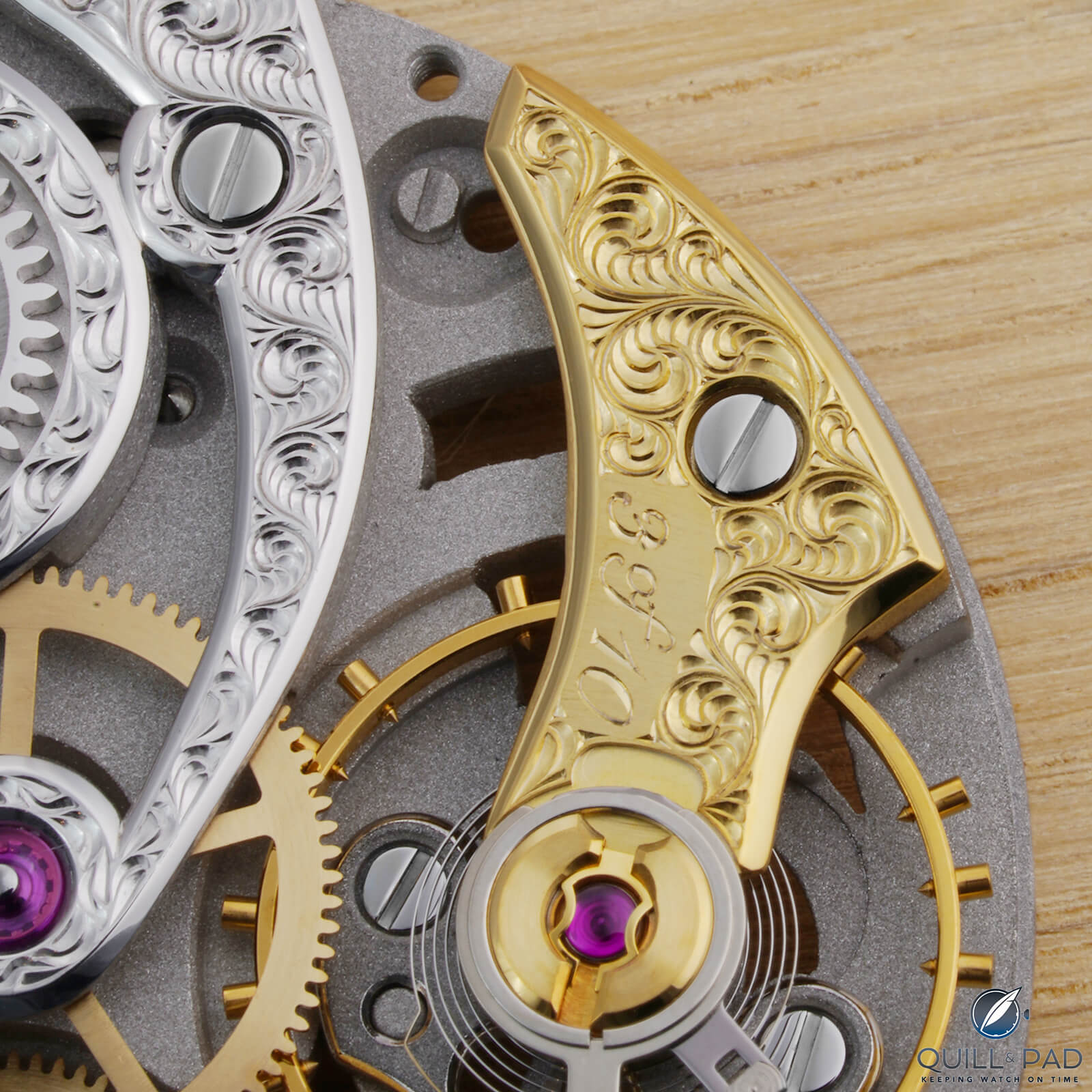
Felipe Pikullik engraved balance cock
Please keep in mind that we make many components from scratch. That’s why we consider our movements to be manufacture calibers. For this reason, we do not build a new balance or a new regulator system. That is simply unnecessary at this stage.
Technically, the entry-level collector’s watches we have now are about fine craftsmanship and traditional skills. That is the issue. And what changes if I replace the regulator system with a high-quality one? The parts will be produced industrially with CNC machines or other means, and we will finish them by hand. Then we have to charge another three thousand dollars more for the watch just because I’ve changed the look. And in the end, it’s no better.
The Etachron system is very good. If you can regulate the watch, if you are good at adjusting – there are books and 600 websites explaining how to adjust a watch – the Unitas-based movement are very good. So most of the time, the problem is not with the regulating system, but with the watchmaker who regulates the watch. That’s also the reason why we don’t change the caliber. Our work is about the effort we put into the components. It’s the watchmaker that determines how good a movement is in the end. It’s not about whether it’s a Unitas or Peseux or whatever.
You can take a Rolex movement, which is one of the best. You can give it to a not so good watchmaker who is not able to regulate the watch and do the finishing properly. But you can also give it to a good watchmaker who pays attention to how he assembles and adjusts everything – that’s our way.

Felipe Pikullik engraved balance cock
—————————————————————————————————–
—————————————————————————————————–
AK: Who regulates watches of your brand?
FP: At the moment, I regulate all of the movements we make. But that will change. My goal is to have more people in my workshop and teach them. I try to pass on these skills to other people. When it comes to fine-tuning an oscillator, there is no one else who can do it apart from me to the level I want. With that quality, we should go from zero to five seconds a day. That’s what I achieve with the Unitas.
AK: My next question relates to tradition and cultural roots. As far as I know, you are connected to Brazil.
FP: My father is from Brazil and my mother is German.
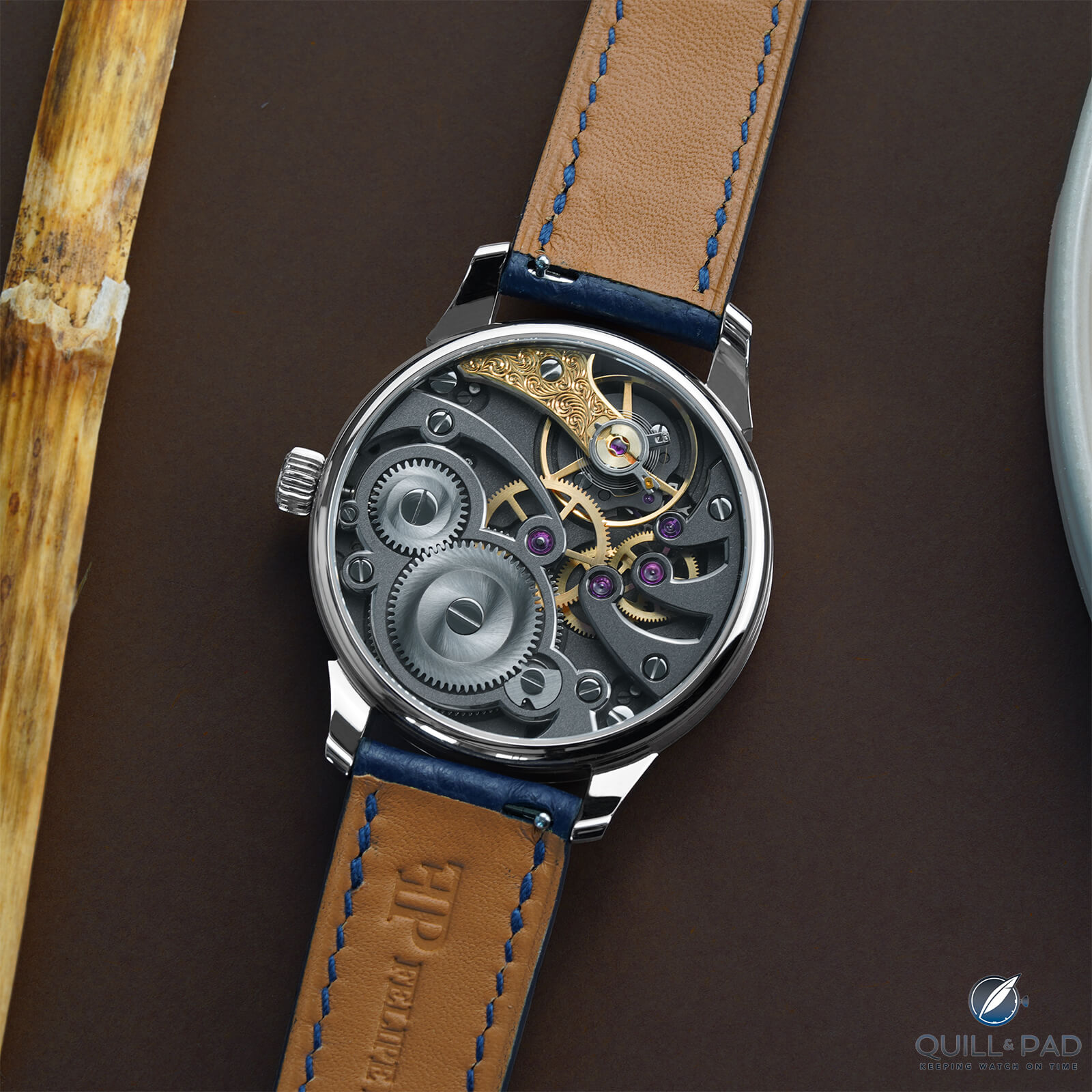
Movement of the Felipe Pikullik Sternenhimme
AK: Okay, when we think of an independent watchmaker, we usually think of Switzerland first. But there are also some from France, England, China, Japan, Russia, Finland, Germany and so on. What do you think about the influence of your cultural roots on the way you create watches? Do you want to be German or Brazilian, or do you simply want to be a watchmaker living in a modern world without borders?
FP: I know what you mean, and of course I’ve thought about it a bit. The thing is, I feel like a German watchmaker. I stand for Germany, but not 100%. The history of precision watchmaking started in the UK, then went to France, and to Germany, and then to Switzerland. It was the path from John Harrison to Breguet, then to A. Lange & Söhne, and finally to Rolex. I respect them all and I admire each of them, albeit for different things.
I want to take the good things from these traditions and bring them all together. That’s my way of thinking. And I don’t just want to stay in Berlin in the future. I want to set up more workshops in other countries. I want to organize them the way I do here, to support the local people and teach them. For example, I would like to go to Spain and live there for a few years because there is always someone in other countries who wants to become a watchmaker.
I get emails every week from people in Spain or other countries where there is no watchmaking, and that is also a promising destination to bring watchmaking to the whole world.
AK: Do you see sufficient demand, sufficient purchasing power of people for your type of watches for the expansion you describe?
FP: I think so. I’m optimistic, because I don’t want mass production. If we grow, that means a high level of quality, but if we grow with quality the quantity might actuallyl be less. Here in Berlin, we produce five to ten watches a month. Maybe with a total of 50 people we can maintain the level of ten watches per month, considering that the watches I want to make in the next few years will become more and more complex.
If you look at Rolex, how many do they sell? About a million watches a year. How much is that in terms of retail price? That’s massive purchasing power. That idea allows me to make plans for the whole world, I just have to show the world what fine watchmaking is. That’s why it’s our job to preserve the knowledge and communicate the value of our work to customers. If they get a watch that is well made, they and their descendants will keep it for generations, it will be history in the future.
That’s my answer, if we really do it and it’s not just about money or marketing and all that. Then, and only then, is it possible. If you just focus on making money with watches it’s difficult.
—————————————————————————————————–
—————————————————————————————————–
AK: As far as I know, your marketing and communication strategy is mainly based on your Instagram page. Do you think it is necessary to establish broader contacts, including the professional community, for example AHCI Academy of independent watchmakers?
FP: When I communicate with Instagram, I see that connoisseurs are searching like crazy. They are very passionate. They know us all, they know Konstantin Chaykin, they know MB&F. I see the Instagram community as a club where people can meet others with the same passion. And more importantly, people who are passionate about watches get to know every independent watchmaker. They find us. What I miss is the exchange with, let’s say, ‘normal people’ who generally have little interest in watches.
In my workshop, for example, I have four employees who I have known since childhood and who previously knew nothing about watches. And now they are crazy about watches. So for me, it’s not important to reach people who are crazy about watches, but to reach ordinary people and get them excited about watches. I want to bring them closer to the art of watchmaking.
I don’t know exactly how to do that, but I’m thinking about maybe going to schools and organizing a day for students where I show them the art of watchmaking. Just to share my passion with normal people.
Every time I look around, I imagine myself spending a day with children of people I know, from my personal network. People like my little brother or my friend’s brother, they are 10 years old and they’ve come to my atelier to disassemble a watch movement. It didn’t used to be so easy here in Berlin because there was no watchmaking. It’s nice to show it to a new generation and pass this knowledge on to people who don’t know it.
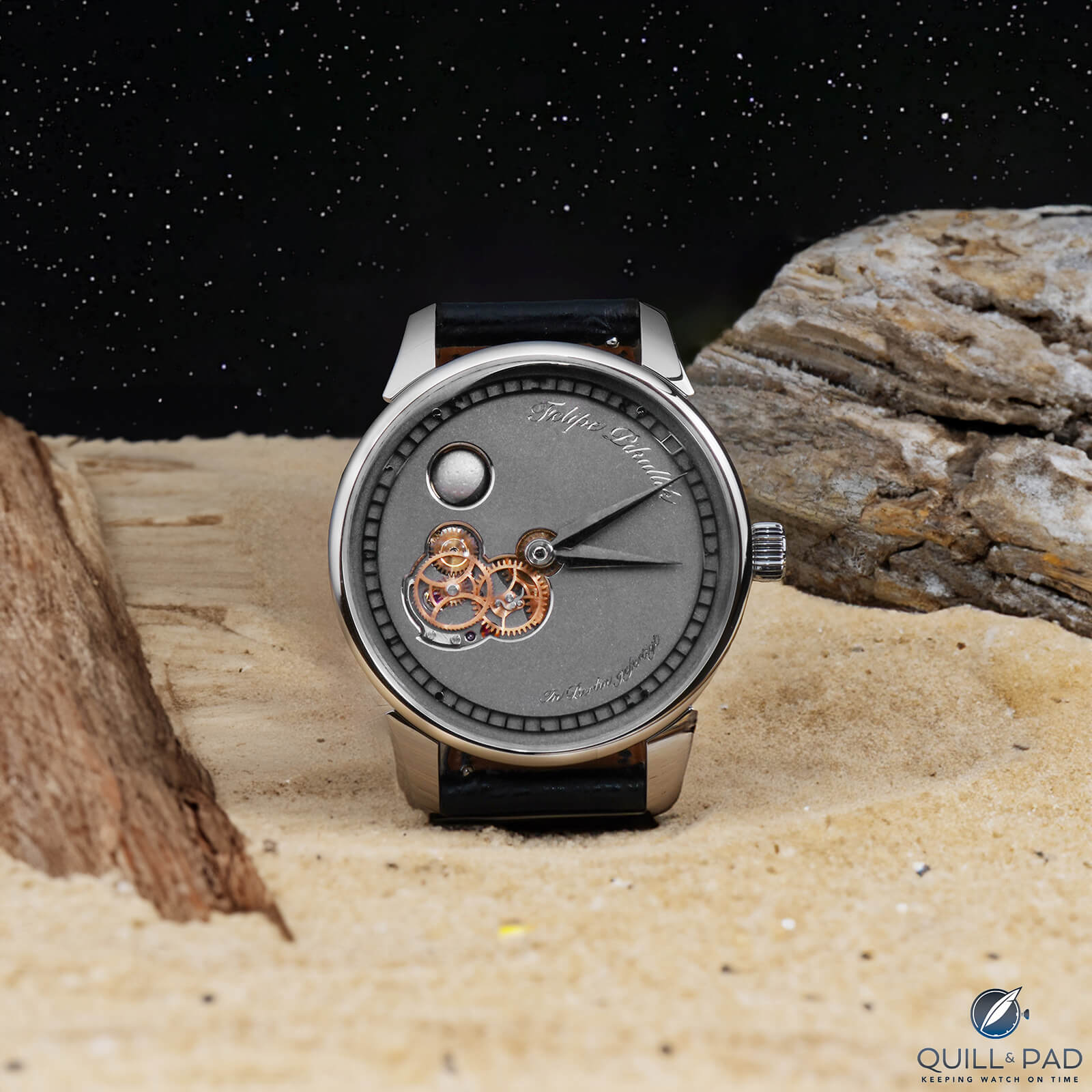
Felipe Pikullik Mondphase One
AK: How many master watchmakers or brands from the past do you have in mind when you create watches?
FP: The first, of course, is John Harrison’s marine chronometers. He was the first one who seriously cared about precision in watchmaking. Then I should mention Breguet, who invented the tourbillon. A. Lange & Söhne, who made the best pocket watches in the world in the second half of the 19th century. And I really admire Greubel Forsey. And that’s because each of them tries to be the best.
Now I’ve something for the future that I want to do. I also have an idea of how I can make my own contribution to watchmaking. That’s what I want to achieve, to be one of the best too. That’s my goal, even though I don’t like competition I want to be one of the best.
When I started, I just said I want to be the best, but it’s not about wanting to be better than somebody else, it’s striving to be the very best you can be. I want to know everything in my profession, practice it and then transfer it to other people. That is a very, how shall I put it, promising and difficult task to realize. To be compared with Breguet one day is my dream.
AK: Thank you and I wish you every success on your journey!
For more information, please visit www.felipe-pikullik.de and you can follow Felipe on Instagram at @felipepikullik_official
You might also enjoy:
Hervé Schlüchter L’Essentiel Regulator: Loss Inspiring Creation
Oscillon Fundamentum: Sublime Handmade Simplicity: The Ultimate Sleeper Watch
The New Strehler Sirna: It Shocked Me!

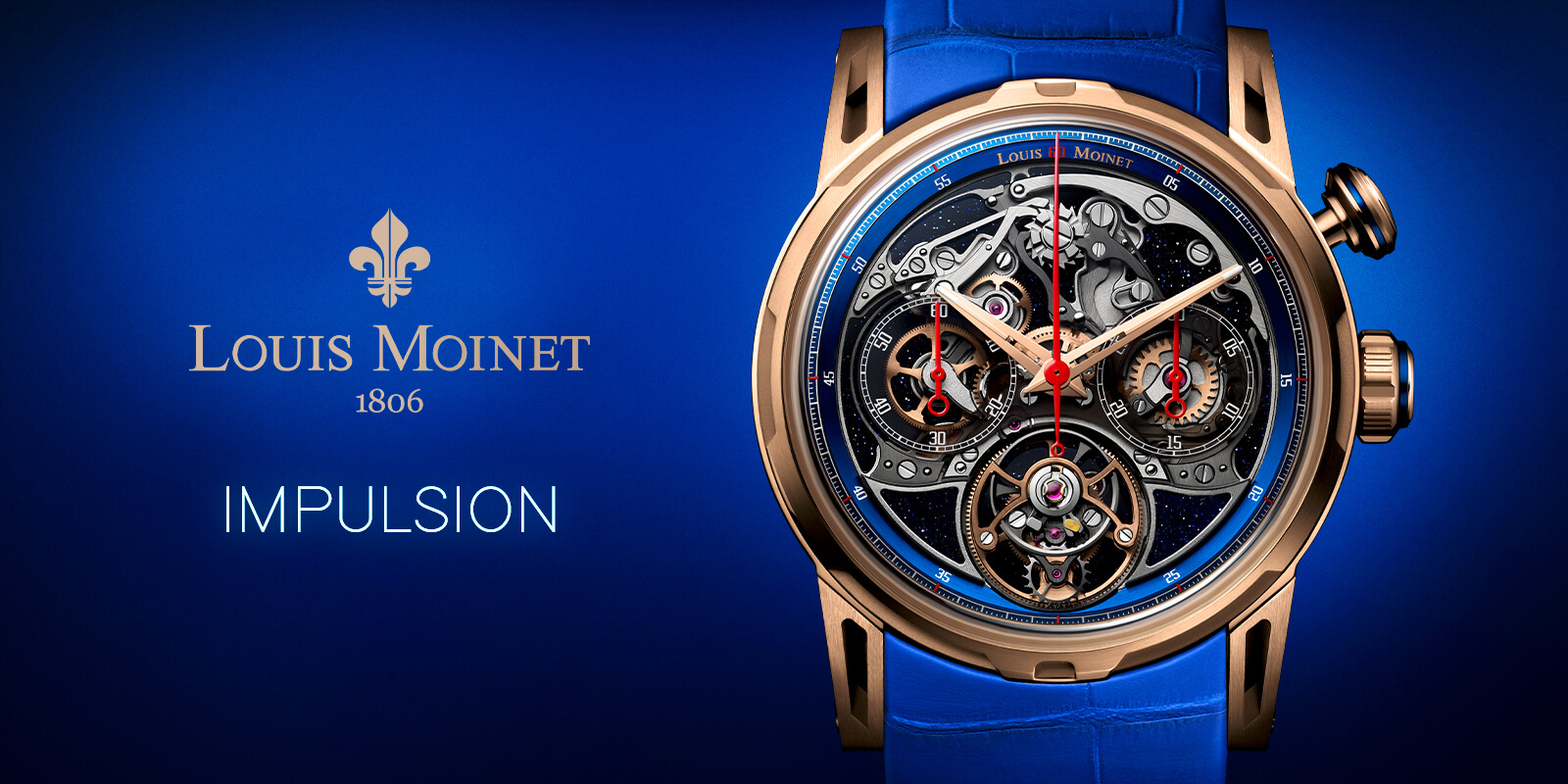
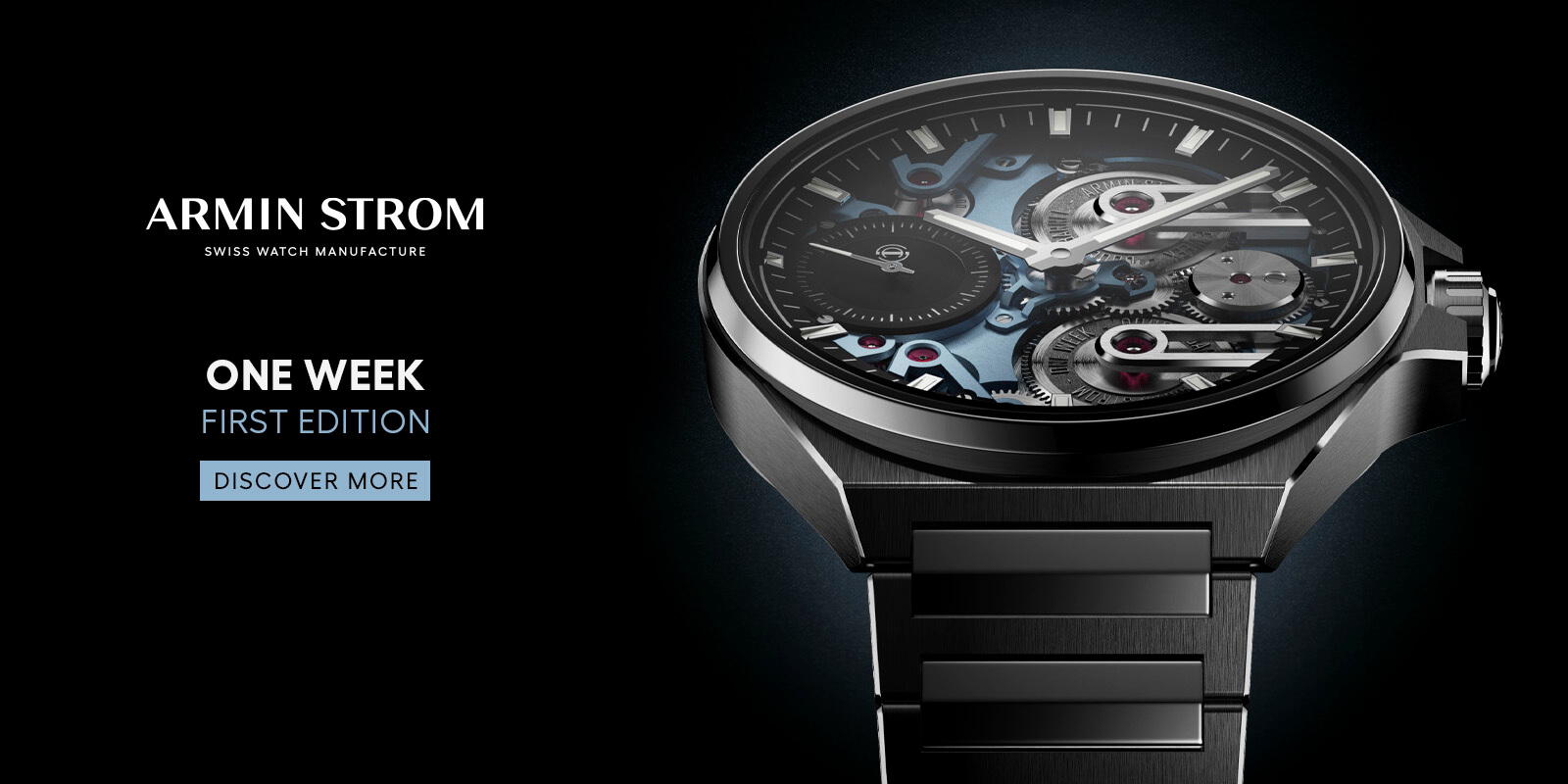
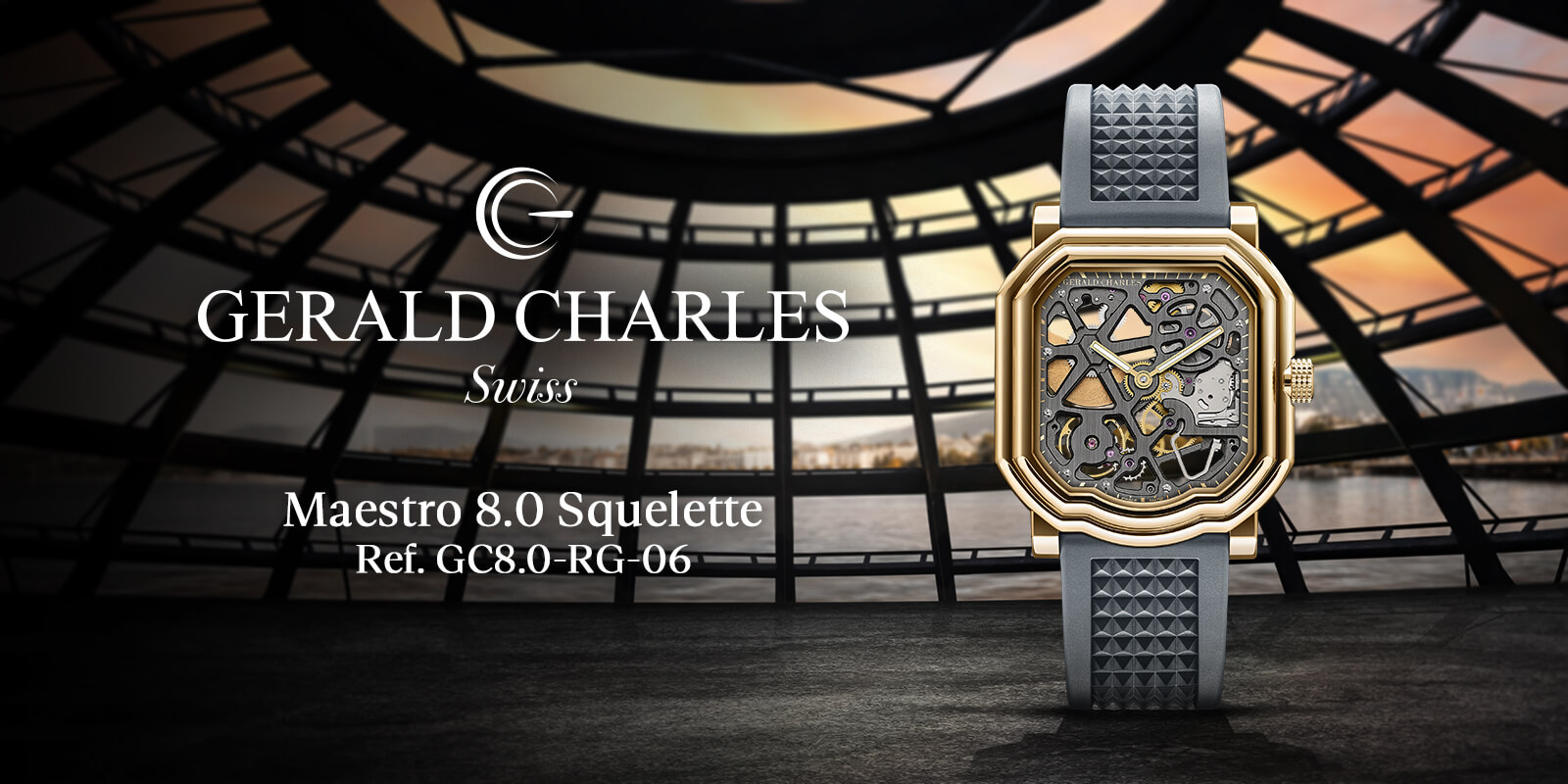
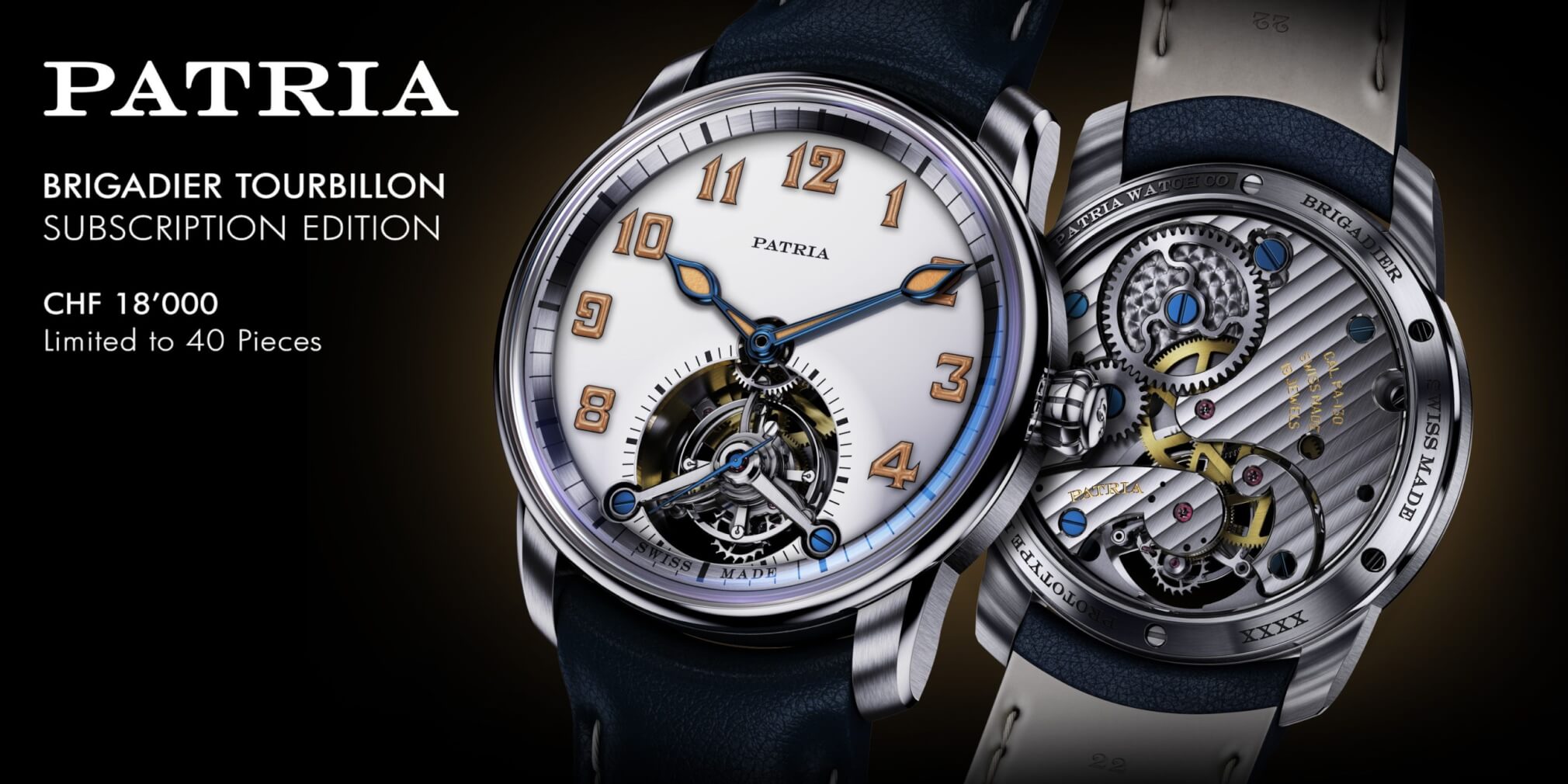


Leave a Reply
Want to join the discussion?Feel free to contribute!